 Do you feel like your diet is lacking good nutrition? Do you have any picky eaters like my kiddos who don’t particularly care for their vegetables? Are you looking for a simple inexpensive way to boost your health without the added expense of supplements? Enter smoothies.
Do you feel like your diet is lacking good nutrition? Do you have any picky eaters like my kiddos who don’t particularly care for their vegetables? Are you looking for a simple inexpensive way to boost your health without the added expense of supplements? Enter smoothies.
Since beginning my journey on preparing fruit smoothies, I am continually amazed what you can add to a simple smoothie to increase the health and nutrition of this wonderful beverage and get all your supplements for the day in whole food form. In fact, it seems to be the best means of getting good nutrition in your kids diet. I have never seen a child that doesn’t love a good fruit smoothie. It is a refreshing beverage for any day of the week! And they are also a great item for any meal. We’ve had them for breakfast, lunch, snacks, and even a light dinner on those extra tiring days. Lately, I have been starting to add various herbs to our smoothies and have noticed some significant improvements in our overall health.
Here are some of the goodies we add to our smoothies:
1. Kefir
I love using kefir as the base for our smoothies because it is one of the most nutritious probiotic available. Kefir, which means ‘feel good” in Turkish, is an ancient cultured, enzyme-rich food filled with friendly micro-organisms that help balance your “inner ecosystem” to maintain optimal health and strengthen immunity.
Kefir’s tart and refreshing flavor is similar to a drinking-style yogurt, and it contains beneficial yeast as well as the friendly ‘probiotic’ bacteria found in yogurt, but is more nutritious. When used regularly, the naturally occurring bacteria and yeast in Kefir combine symbiotically to help balance your intestinal flora and boost your immunity. Learn how to make your own kefir here.
Whole milk yogurt, coconut milk, coconut kefir, coconut water, or kombucha are also excellent bases for your smoothies, depending upon your needs and preferences. I have used and love all these alternatives as well. I use about 3/4 – 1 cup kefir or alternative for my base.
2. Greens
We have been making green smoothies for some time now. Adding fresh greens can assist in boosting energy, building your immune system, detoxing impurities, and loosing weight. Greens are rich in magnesium and alkaline minerals like calcium and are superb in their Omega-3 unsaturated fat content. Believe it or not, greens are one of the richest sources of protein. I have used organic spinach (as it is a highly sprayed crop) predominately as it is easy to add without affecting the texture. I can add half of head of spinach and it blends in well with all the frozen fruits.
We also use the Green Magna Plus Powder if I don’t have greens on hand or want to boost it a bit more. I will add 1 Tablespoon of this mixture. Magma Plus contains barley grass juice powder plus 56 other natural ingredients. It provides a full range of phytonutrients including active enzymes, antioxidants, carotenoids, flavonoids, vitamins, minerals, fiber, protein, amino acids, prebiotics, probiotics, and chlorophyll.
3. Herbs
Lately, we have started adding herb powders to our smoothies with excellent results. Adding herbs is like preparing your own vitamins. They are real food and easily digestible. God has provided all the health and nutrition that we need in His creation, and this is beautiful to behold as you study the different kinds of herbs and their functions in our bodies. These herbs may affect the texture somewhat of your smoothies, so start small and build up as you go to get your full dose.
Daily Boost Herba-Smoothie – This product is compiled by Bulk Herb Store and is specifically designed to give you full balance in your health and perfect for your daily smoothies. This mixture of herb powders contains the following:
|
|
|
|
|
|
|
Adding 1 heaping teaspoon of this herb powder is wonderfully nutritious! It blends in so well with fruit and you cannot even notice it is there. I have had increased energy and sleep since taking these herbs.
Spirulina
Spirulina powder is a blue-green algae that grows on freshwater ponds. Spirulina is 55-70 percent protein by weight and considered my many to be the greatest plant source of usable protein and is rich in B vitamins and gammalinolenic acid (GLA). We add 1 heaping teaspoon to our smoothies currently, and hope to boost it up as we go. Spirulina is certainly a superfood!
Kelp Powder
Seaweeds are the richest plant source of minerals, providing 10-20 times the minerals in land-based plants. They contain a more well-balanced and broader spectrum of minerals necessary for the body than any other organism. They are used to promote longevity, prevent disease, and boost a healthy metabolism to those courageous enough to consume them. The easiest to come by and disguise is kelp powder and can be added to smoothies. We add about 1 heaping teaspoon to smoothies and will build up to about 1 Tablespoon.
Slippery Elm Bark Powder
Slippery Elm is a “mucilaginous herb that helps absorb toxins in the bowel. In fact, it is very soothing to the entire digestive system. It is useful especially for diarrhea, bowel weakness or as a mild nourishing food for sick children. Since the herb is slightly sweet, it is one that children will often take readily if it is mixed in some cereal, applesauce or fruit juice.”
We have been adding another heaping teaspoon of this powder with our smoothies.
My cousin Amy introduced me to the idea of adding herbs to my smoothies. I asked her to share her recipes and herb combos. Amy is dairy-free, and offered these helpful recipe suggestions. The liquids can easily be changed out for whatever base you would like (yogurt, kefir, coconut milk, kombucha, etc). Each recipe is prepared for 4 servings.
1 1/2 med. bananas
1 large mango
1 1/2 c. strawberries
1/2 c. kombucha
1 Tbsp flax seed
approx. 1 1/2 c. water
2 med. bananas
1 c. frozen strawberries
1 c. frozen blueberries
1 c. water
1 large mango
2 c. frozen blueberries
1 c. frozen blackberries
1-1.5 cups liquids
3 small bananas
2 c. frozen strawberries
3/4 c. kombucha
1 c. water
2-3 c. frozen blackberries
1-2 bananas
6 TBSP coconut water
1/2 c. kombucha
1 c. water
2 bananas
2 cups frozen peaches
1-2 cups water
To each of the above combos, add any or all of the following (start smaller and gradually increase herbs as desired). Again this is per 4 servings:
1 Tablespoon orange juice concentrate (helps balance it out if a smoothie needs a bit more flavor or sweetener)
1 teaspoon vanilla extract (does wonders for adding flavor!)
1/4 teaspoon stevia powder, as needed
2 tsp ground Daily Boost Herba Smoothie Combo
2 tsp ground slippery elm
1 1/2 tsp ground nettle (increases liver and kidney function)
3 tsp ground kelp powder (this is the strongest flavored one, if I think the smoothie isn’t strong flavored enough to mask it, I’ll reduce the amount I add, or skip it altogether for that day)
3 tsp (or more) ground spirulina
little under 2 TBSP cut leaf alfalfa (rich in vitamins and minerals, chlorophyll, blood purifier)
Our family is currently using the herba smoothie combo, slippery elm, spirulina, and kelp powder and hope to start adding a bit more of other herbs as we go. A great option of getting real food in your smoothies without expensive supplements!
My kids love these smoothies, as you can see in the pictures!
These herbs can be purchased through Bulk Herb Store or Mountain Rose Herbs (with the exception of the Herba Smoothie mix), both of which are companies that I love!
What healthy additions do you like to make to your smoothies?
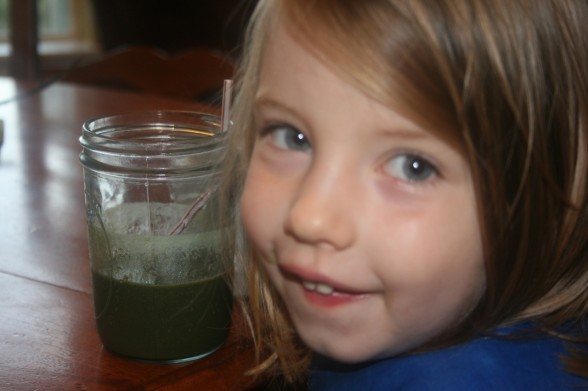 Please note that this information is shared for educational use. We are not licensed practitioners in any way but love to share out of our own personal experience. As far as I understand, all these herbs are perfectly safe for pregnant and nursing mothers.
Please note that this information is shared for educational use. We are not licensed practitioners in any way but love to share out of our own personal experience. As far as I understand, all these herbs are perfectly safe for pregnant and nursing mothers.
Announcement: The winner of our Christa Taylor giveaway was Tara (taraalic..@)! Congrats!

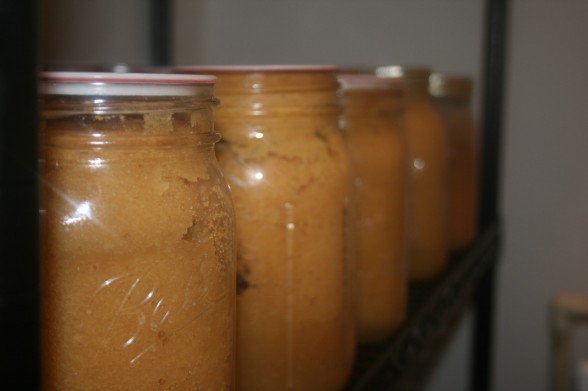
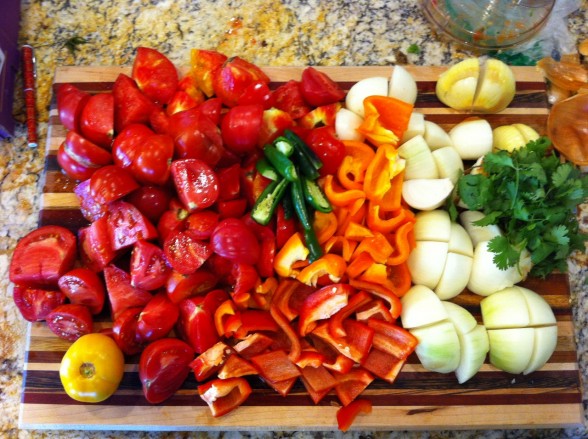
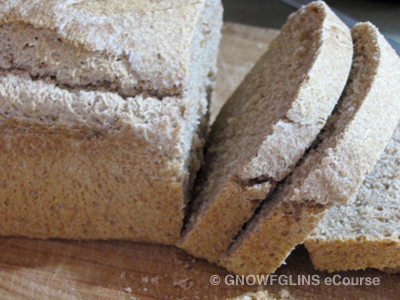 Guest post written by Wardeh Harmon from
Guest post written by Wardeh Harmon from  3. Sourdough Is Finicky.
3. Sourdough Is Finicky. 4. Sourdough Is Just For Flavor.
4. Sourdough Is Just For Flavor. Wardeh (‘Wardee’) Harmon lives in Oregon with her husband and three children. They raise ducks and dairy goats on five and a half gorgeous wooded acres, which they are in the process of turning into a productive homestead. Wardeh’s passions are healthy cooking and sewing practical wool garments, although she loves to create just about anything from scratch, should the mood hit right. Wardeh teaches traditional and whole food cooking at the
Wardeh (‘Wardee’) Harmon lives in Oregon with her husband and three children. They raise ducks and dairy goats on five and a half gorgeous wooded acres, which they are in the process of turning into a productive homestead. Wardeh’s passions are healthy cooking and sewing practical wool garments, although she loves to create just about anything from scratch, should the mood hit right. Wardeh teaches traditional and whole food cooking at the 
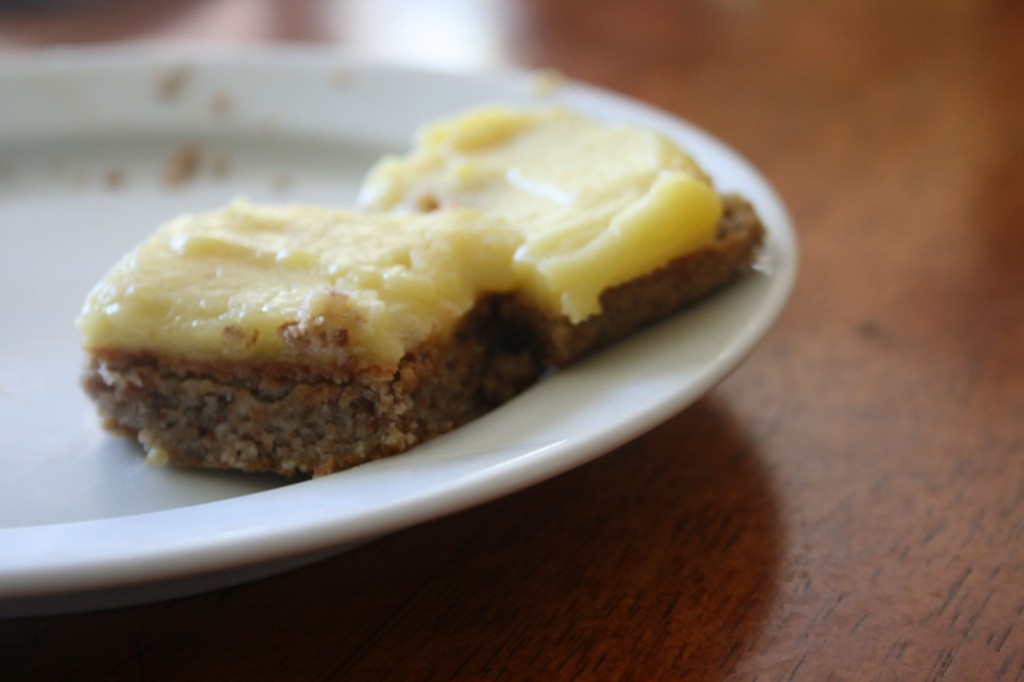

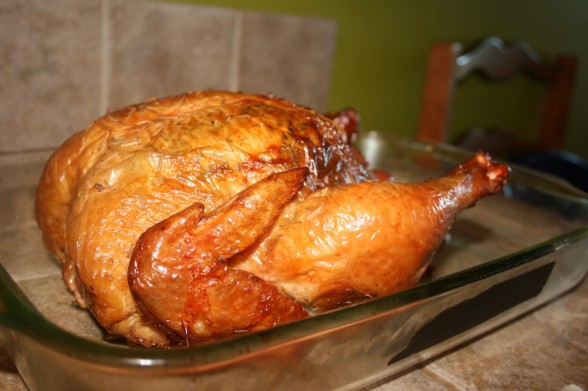 Do you want to learn how to BBQ a wonderfully moist chicken? The key: stuff the chicken under the skin! This simple technique imparts such a lovely moisture and flavor that is beyond delicious, especially when that stuffing is butter creamed with roasted garlic and freshly grate Parmesan cheese, seasoned with herbs. As the chicken roasts, the herb butter melts beneath the skin imparting flavor and juiciness to the meat. This chicken is an excellent main course served over mashed potatoes with gravy from the juices. This recipe can be prepared in a similar fashion in the oven or crockpot. Yum!
Do you want to learn how to BBQ a wonderfully moist chicken? The key: stuff the chicken under the skin! This simple technique imparts such a lovely moisture and flavor that is beyond delicious, especially when that stuffing is butter creamed with roasted garlic and freshly grate Parmesan cheese, seasoned with herbs. As the chicken roasts, the herb butter melts beneath the skin imparting flavor and juiciness to the meat. This chicken is an excellent main course served over mashed potatoes with gravy from the juices. This recipe can be prepared in a similar fashion in the oven or crockpot. Yum! 3. Spoon the garlic butter by hand under the skin. Spread the butter all over the chicken meat by gently rubbing the skin with your fingers.
3. Spoon the garlic butter by hand under the skin. Spread the butter all over the chicken meat by gently rubbing the skin with your fingers. 6. Place the chicken, breast-side up, in the center of the hot grill grate over the drip pan and away from the heat, and cover the grill. Grill until the chicken is deep golden brown and the meat is cooked through, 1 1/4- 1 1/2 hours. If using a charcoal grill, you’ll need to add 12 fresh coals per side after 1 hour. Internal temperature should be 180 degrees.
6. Place the chicken, breast-side up, in the center of the hot grill grate over the drip pan and away from the heat, and cover the grill. Grill until the chicken is deep golden brown and the meat is cooked through, 1 1/4- 1 1/2 hours. If using a charcoal grill, you’ll need to add 12 fresh coals per side after 1 hour. Internal temperature should be 180 degrees.